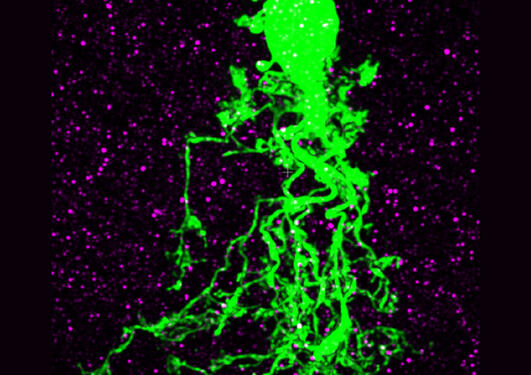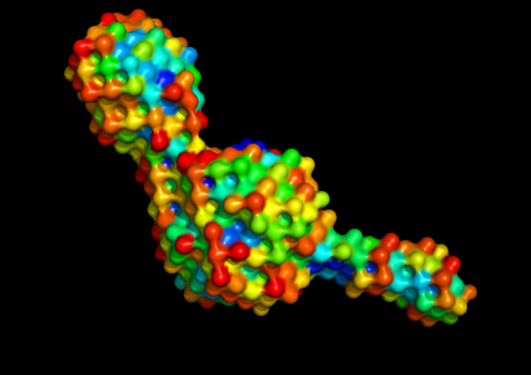Molecular pathways of Huntingtons’ disesase
In Huntingtons Disease, patients suffer from cognitive deficits and psychiatric disturbance, and later also from a devastating loss of movement control. Researchers at the Department of Biomedicine have identified some of the molecular events that occur in the brain in Huntingtons Disease.

Main content
Dr. Hongyu ZHANG and her colleagues have identified that dysregulation of AMPAR surface diffusion is one key feature of Huntington’s disease.
The results are published in the journal Nature Communications, 15 October 2018.
The increase and decrease in the synaptic number and retention time of AMPARs are thought to be one key mechanism underlying the enhanced and reduced synaptic transmission during long-term potentiation (LTP) and long-term depression (LTD), two major forms of synaptic plasticity widely considered cellular correlates for learning and memory.
Using a combination of live-cell nanoparticle tracking and super-resolution imaging, They show that AMPAR surface diffusion is disturbed in various rodent models of HD. They further demonstrate that defects in the brain-derived neurotrophic factor (BDNF)–tyrosine receptor kinase B (TrkB) signaling pathway contribute to the deregulated AMPAR trafficking by reducing the interaction between transmembrane AMPA receptor regulatory proteins (TARPs) and the PDZ-domain scaffold protein PSD95. The disturbed AMPAR surface diffusion is rescued by the antidepressant drug tianeptine via the BDNF signaling pathway. Tianeptine also restores the impaired LTP and hippocampus-dependent memory in different HD mouse models. These findings unravel a mechanism underlying hippocampal synaptic and memory dysfunction in HD, and highlight AMPAR surface diffusion as a promising therapeutic target.
Of most relevance, Dr. Hongyu ZHANG and her colleagues have also unraveled that dysregulation of AMPAR surface diffusion is also a key characteristic psychiatric disturbance such as anxiety and depression (Mol Psychiatry. 2013 Apr;18(4):471-84.) and Alzheimer’s disease (Cell Rep. 2018 Jun 12;23(11):3137-3145.). Pharmacological reversal of AMPARs surface diffusion ameliorates synaptic plasticity, memory and/or anxiety in these disease models. Thus, modulation of AMPARs surface diffusion emerges as a primary therapeutic target for neuropsychiatric and neurodevelopmental diseases, which exhibit abnormal synaptic plasticity and cognition.

